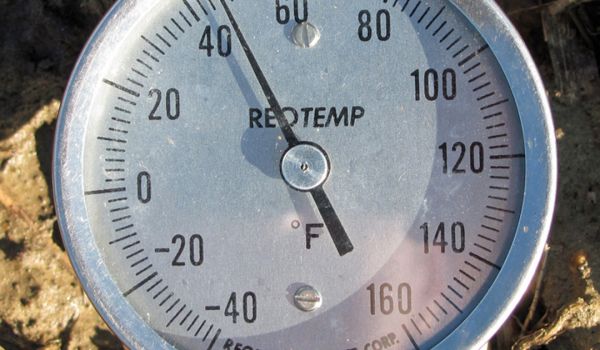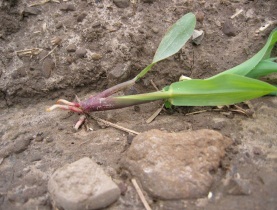Planting Corn into Wet Soils

“Rich on Agronomy” is an occasional agronomy column from PFS Account Manager Rich Larson.
Author’s note: I originally wrote about planting corn into wet soils in May 2011. With the current wet and cold soil conditions, this topic is very applicable to growers in the northern plains right now.
We are facing another year with the possibility of planting into wet and cold soils. Corn yields in fields that are planted before soil conditions are fit can be 40-50 bushels less than fields worked a few days later when soils are more fit.
Here are some tips to help limit yield reductions when planting in these conditions.
- Working the soil when it is too wet is very detrimental, especially on heavy soils. Avoid this if at all possible. If soil “ribbons”, it is too wet to work or plant into.

- Wait until the soil temperature is 50 degrees at the 2″ depth, if possible. The faster the seed can emerge, the better. This lowers seedling disease risk and the chances of imbibing cold water.
- Don’t plant in front of a 3-4 day cold weather forecast. I heard of a grower planting last Monday, while knowing the forecast of cold and rain. Why do that on April 21?
- Increase your population by 5% to compensate for stand loss. Consider increasing population by up to 10%. In very poor conditions where the seed bed was worked when wet, higher amounts of residue are present.
- Lower the down pressure on your planter units to a minimum and still get the seed at the proper depth of 1 1/2″ – 2″. This lessens the compaction caused by closing wheels.
- Do not plant less than 1 1/2″ deep with the intention of speeding emergence. Rootless Corn Syndrome may occur, causing lowered yields and tipped corn later in the season.

- Consider using one or two spiked closing wheels on heavy soil to reduce sidewall compaction from the disc openers. Sidewall compaction (sidewall smear) reduces root development and yield potential.

- Use residue managers (trash whippers) to clear residue as best you can. Set them so they skim the surface and don’t push soil. This is a standard practice and should always be considered in high residue fields. This also creates a blacker and warmer soil surface.
Growers have one shot each year to get planting done right the first time. Patience will pay dividends in these situations.














